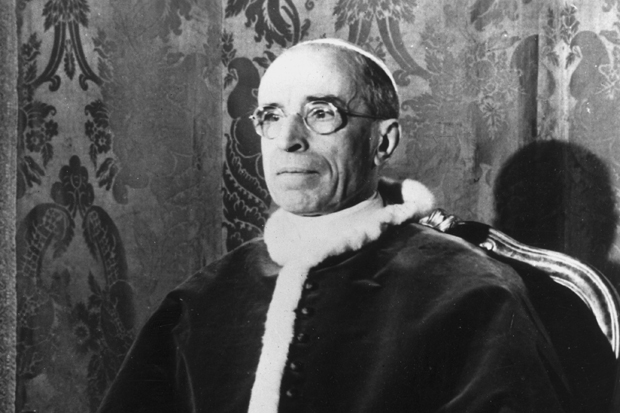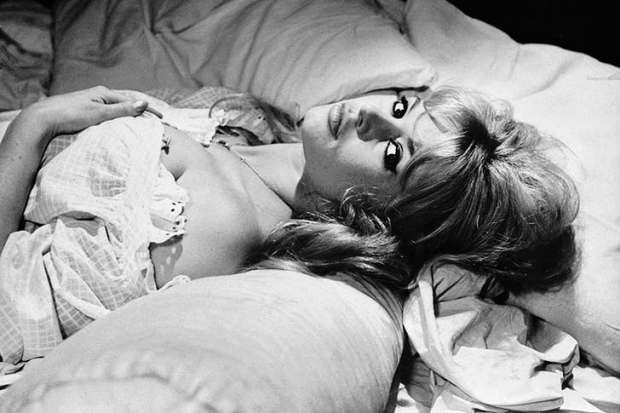For almost 400 years, since it was built on the orders of Pope Urban VIII in the 17th century, the grand Apostolic Palace at Castel Gandolfo on a lake in the Alban Hills south of Rome has been the place where popes have retreated to get away from the city’s summer heat. John Paul II liked it so much that he built a swimming-pool there, and his successor, Benedict XVI, was almost as fond of it. But Pope Francis, who avoids all forms of ostentation, has never stayed there: he finds it too grandiose. And now he has thrown it open to the public as a museum, meaning it will probably never again be used as a private papal residence.
For the public the main attraction is the pope’s bedroom, where 40 children were born in the papal bed when Pius XII, the wartime pontiff, let it be used as a delivery room when the area was engulfed by fighting between the Allies and the occupying Germans in 1944; and it was also here that Pius himself died in 1958 in the most distressing circumstances. I learnt about it ten years later when I was sent in 1968 to Rome as the Reuters bureau chief in Italy. There was a disconnected red telephone set on one of the office desks, and I asked what it had been used for. I was told that it had been installed to receive calls from the pope’s personal doctor, Riccardo Galeazzi-Lisi, so he could give the news agency regular bulletins while Pius had been dying of hiccups at Castel Gandolfo.
This was a time when the Vatican was still intensely secretive and would not have dreamt of supplying the media with a running commentary on a dying pope’s health, but this doctor had been as happy to oblige Reuters as it had been to pay him. This was corrupt enough, but there was more. Seated at the pope’s bedside, Galeazzi-Lisi took a series of ghoulish photographs of him in his death agony and sold them to magazines. It was a breathtaking betrayal of someone who had treated him as a close confidant, had appointed him his personal physician on his election to the papacy in 1939, and had made him an honorary member of the Pontifical Academy of Sciences.
Galeazzi-Lisi is not the only doctor who has been tempted to make money out of his intimacy with a famous person; one thinks of the doctors of Winston Churchill, Mao Zedong and Michael Jackson. But Galeazzi-Lisi was exceptional in his ingratitude to his benefactor. He had been the pope’s friend for nearly 30 years, from the moment in 1929 when, as an oculist, he had supplied the then Archbishop Eugenio Pacelli with a new pair of spectacles; and when he died, Galeazzi-Lisi proved himself to be not only corrupt but also a quack. For the pope’s lying-in-state in St Peter’s, he chose to keep the usual embalmers away and to treat the body himself according to what he believed to be an ancient Egyptian formula that would keep it in a pristine state for at least 100 years.
This involved encasing the body in a cellophane bag full of herbs and spices, in which it was put on display to the crowds filing through the basilica. Unfortunately, what happened was the opposite of the intended effect. The body began to decompose before the eyes of the faithful and even started to smell. It had to be whipped out of the basilica in the middle of the night and be properly re-embalmed by professional undertakers before the pilgrims returned next morning.
The doctor’s behaviour did not go unpunished, for the next pope, John XXIII, banned him for life from the Vatican City State, the only person ever to have suffered this penalty. The Italian Medical Council also struck him off for ‘infamous conduct’, though a higher court reversed its decision on a technicality and he was allowed to practise medicine again. He carried out a few operations and wrote a book proclaiming his innocence of any malpractice, but the public heard nothing again of him until, in 1968, his name appeared in the death announcements of a Roman newspaper. He had died at 77 and received no obituaries. I doubt if the guides at Castel Gandolfo tell visitors about Galeazzi-Lisi’s role in Pius XII’s final days, but the draw of the pope’s bedroom would surely be even greater if they did.
The post Long life appeared first on The Spectator.
Got something to add? Join the discussion and comment below.
Get 10 issues for just $10
Subscribe to The Spectator Australia today for the next 10 magazine issues, plus full online access, for just $10.
You might disagree with half of it, but you’ll enjoy reading all of it. Try your first month for free, then just $2 a week for the remainder of your first year.













Comments
Don't miss out
Join the conversation with other Spectator Australia readers. Subscribe to leave a comment.
SUBSCRIBEAlready a subscriber? Log in